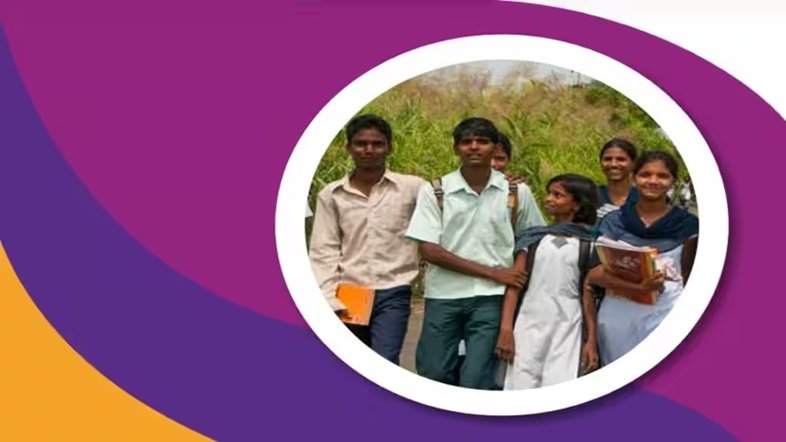
New Delhi – 15 Dec, 2023: A comprehensive survey, titled ‘The Voices Survey’ has provided valuable insights into the state of life skills education in India. The survey aims to understand the awareness and perceptions of life skills among youth, parents, school teachers/ ITI Trainers, and trainers in Technical and Vocational Education and Training (TVET) institutions. The survey was jointly conducted by Life Skills Collaborative in partnership with Breakthrough, Quest Alliance, and Pratham Education Foundation.
The Voices Survey 2023 was conducted across 11 districts in states such as Rajasthan, Uttar Pradesh, Maharashtra, Uttarakhand, Haryana, and Mizoram, the survey provides a nuanced understanding of the challenges and opportunities faced by the youth with regards to life skills education. Rukmini Banerji, Chief Executive Officer, Pratham Education Foundation said:
“The findings from ‘The Voices Survey’ underline the urgent need for initiatives that offer our young people opportunities to understand and acquire life skills. The public education system has a very important role to play in enabling this. Importantly, the survey revealed that most youth who were familiar with life skills had heard about them from their teachers, illustrating the critical role of public education systems in integrating life skills education into the curriculum.”
The survey employed a multi-method approach, combining quantitative indicators with qualitative exploration through focus group discussions. A total of 15,856 youth and 13,806 parents were surveyed through household visits, providing a comprehensive understanding of their views on life skills. Additionally, 2,366 school teachers participated in the survey, providing valuable insights from an educator’s perspective.
Key findings of the survey are as follows:
Experience of vocational/skill training
The survey reveals that 80% of the surveyed youth in rural India are yet to pursue vocational or skill training, emphasizing a significant skills gap. Computer courses stand out as the top choice among those who have undertaken training. Notably, gender disparities exist, with 39% of young women opting for vocational training compared to 33% of males. Regional variations are apparent, with 96% of youth in Lunglei, Mizoram, lacking vocational training, while 44% and 43% in Solapur and Satara (Maharashtra) have pursued such courses. These findings point to the pressing need for targeted efforts to address the skills gap and regional disparities in youth vocational training opportunities.
Access to Digital Devices
The survey reveals a pronounced reliance on smartphones among rural youth, with 92% of those surveyed reporting the use of smartphones, particularly for communication (92%), entertainment (95%), and education (88%). Rural youth, especially older males, leverage smartphones not just for entertainment but also for educational purposes, emphasizing the device’s multifaceted role in their lives. It is interesting to note a marked rise in the category of “learning new things” among young women. Nearly 67% and 77% of 14-18 and 19-22 age group female youth, respectively, reported using their phones to learn new things as compared to 44% and 51% of male youth in the respective age group.
Around 90% of the sampled older youth (19-22 years) had access to mobile phones while only 71% of the younger youth (14-18 years) had access. There is a marked gender gap in access to mobile phones. Among the older youth, for example, just 5.5% of sampled males had no access to mobile phones, but the corresponding proportion among females was three times higher at 16.3%.
Youth who own a mobile phone are around twice as aware of the term ‘life skills’ as compared to those without access to a mobile. Similarly, youth who know how to use a computer are around twice as much familiar with the term than those who don’t.
Sohini Bhattacharya, Chief Executive Officer, Breakthrough said:
“Listening to ‘Voices from The Ground,’ is an essential part of making sure that the work that we are doing is actually meaningful for the communities we are partnering with. Here participants explore vital competencies like communication, critical thinking, problem-solving, emotional intelligence, and resilience; influencers and gatekeepers add to the inspiration, encouraging attendees to integrate life skills into their daily lives and communities learn to value the data we gather from them, see for themselves the results on the ground and react to it”
Exposure to News/Mass Media
While almost 80% of rural youth engage rarely (49%) or never (31%) with news, older youth (19-22 years) show higher daily exposure (13%) compared to their younger counterparts (6%). However, gender differences in news engagement are marginal. There is an evident gap in news awareness among rural youth, suggesting an opportunity for targeted interventions to improve their access to current affairs and diverse information sources, to increase the adoption of life skills courses.
Life Skills Awareness and Perceptions among Youth
The study explores youth’s awareness of life skills, revealing that approximately 4 in 10 youth have heard of the term ‘life skills’ or ’21st-century skills.’ Age, education level, and access to digital devices influence awareness. Overall, 41% of youth are aware of life skills or 21st Century Skills, with older individuals (50%) more informed than younger ones (38%). Awareness varies across districts, with Karnal (61%) and Jhajjar (55%) in Haryana showing the highest levels, while Gorakhpur (13%) in Uttar Pradesh has the lowest. There are no gender differences overall, but in Lucknow (Uttar Pradesh), males (42%) are more aware than females (28%), while in Satara (Maharashtra) and Dehradun (Uttarakhand), the reverse is true.
Sources of Life Skills Awareness
Teacher guidance (65%) and school textbooks (36%) emerge as the primary sources of life skills awareness among rural youth. Variations across age groups highlight the importance of targeted educational strategies. Collaborations with educators and educational materials could enhance youth exposure to life skills concepts. Challenges in learning life skills include a lack of knowledge, materials, and limited discussions at home and school. A systematic approach to life skills education is needed, addressing challenges and tailoring content to the specific needs and perceptions of diverse youth groups.
Aakash Sethi, Chief Executive Officer, Quest Alliance
“The Life Skills Collaborative provides a platform where several organizations can come together to ensure that life skills become an integral part of formal education. This unified platform amplifies collective voices, and helps set benchmarks and standards for life skills. It also guides government bodies in building curriculum and assessments in line with these standards. Additionally, it persuasively advocates the necessity of these skills to thrive in the 21st century.”
Life Skills Awareness among Parents
The surveyed parents, particularly mothers, demonstrate limited awareness of the term life skills. More than one-third of mothers had never been to school, and only 21% had heard of the term life skills. Fathers, with a higher education rate, showed a more significant awareness (over 35%). Parental awareness gaps underline the need for targeted awareness campaigns and inclusive family education programs.
Parent Access to Mobile Phones and Usage
Gender disparities in mobile phone access persist among parents, mirroring trends observed in the youth demographic. Only half of surveyed mothers own mobile phones, contrasting with over 80% of fathers. Additionally, women have less access to smartphones, with notable differences in usage patterns. Gendered patterns in mobile phone access underline the importance of addressing technology gaps to ensure equal opportunities for all parents.

